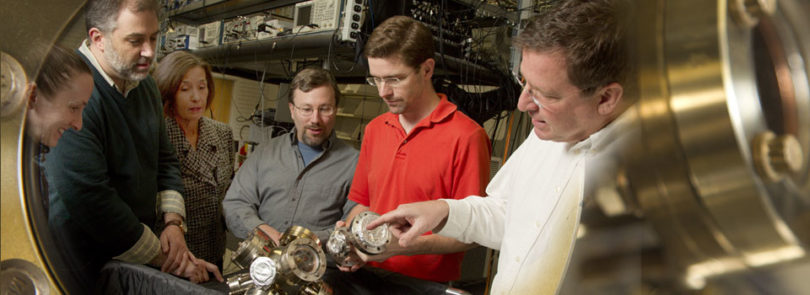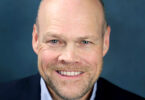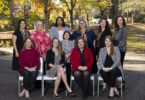Improving the disciplines of science, technology, engineering and mathematics has become a state and national priority. Recognizing this need, UGA established the Office of STEM (science, technology, engineering and mathematics) Education in 2007 with support from the University System of Georgia Board of Regents.
Providing campus-wide leadership for STEM activities, UGA’s program has three goals: To demonstrate the university’s continuing commitment to increase the number of students who succeed in STEM courses, to increase the number of students who pursue degrees in STEM fields, and to make science and mathematics teacher production a high priority to ease Georgia’s severe shortage of instructors in these subject areas.
One great success of the UGA Office of STEM Education is the creation of STEM learning communities. These communities are comprised of UGA faculty and local kindergarten through 12th grade teachers who meet on a regular basis to develop and share professional knowledge. Their goal is to improve STEM instruction and increase student achievement at all educational levels, said Nancy Vandergrift, program coordinator.
“Members focus their discussions on issues related to instruction and/or student learning so that professional development is specific and content-rich,” she said. “Once members gain respect and trust for each other, they begin to understand they can do more together than alone. While working toward their goals, amazing and possibly unexpected programs are planned and implemented.”
Currently, there are nine STEM learning communities.
The Advanced Placement Calculus Learning Community demonstrates the success of this collaboration. Calculus and math teachers who participated in the community saw their students’ advanced placement calculus exam scores rise significantly-from well below state and national averages to well above-in just three years. Teachers who participated in the learning community attribute the rise in the scores to the content and information they received and talked about in their learning community.
The Physics Learning Community, which has been meeting since 2007, also represents the program’s synergy. Participants include five high school physics teachers and four physics and science education professors. The learning community has become a place to test new ideas about science teaching outside of the classroom. It also fosters additional contact between k-12 teachers and UGA faculty. For example, high school students visit laboratories at UGA, and UGA faculty reciprocate by visiting high school physics classrooms.
“In local high schools there is usually only one physics teacher, and virtually no one else knows anything about the subject,” said Kevin McReynolds, an astronomy, chemistry and physics teacher at Winder-Barrow High School. “Participating in the STEM learning community allows me to interact face-to-face with my high school physics teaching peers for creative collaboration and for solving subject-specific dilemmas. The STEM learning community also allows me to learn from university faculty about areas of ongoing research and teaching trends, which means I can better prepare my students.”
Dava Coleman from Jackson County echoed his comments. “I am in two learning communities at UGA – Chemistry and Physics,” she said. “Content-focused professional learning is scarce in the upper level science classes, so the STEM learning communities provide me with the content enrichment that I need to help my classes keep pace with the college curriculum. Plus the pleasure of discussing physics and chemistry with colleagues is undeniable. I have gained so much through our work, and I know that my students benefit from my participation. I can’t imagine not being a part of these wonderful groups of educators!”
In summer 2011, the Physics Learning Community submitted a grant proposal to the Vernier Technology Co. The proposal was chosen from among 2,000 others, and the learning community received $10,000 worth of Vernier lab equipment that teachers can check out for their students’ use when learning about environmental radiation.
From the university’s perspective, the STEM learning communities are equally successful. William M. Dennis, head of UGA’s physics and astronomy department, said he believes the “active partnership between UGA faculty and local area high school teachers will have an extremely positive impact on student engagement and learning in the sciences through enhanced instruction. I commend all involved in this important partnership for the giving of their time and effort to improve STEM education.”








